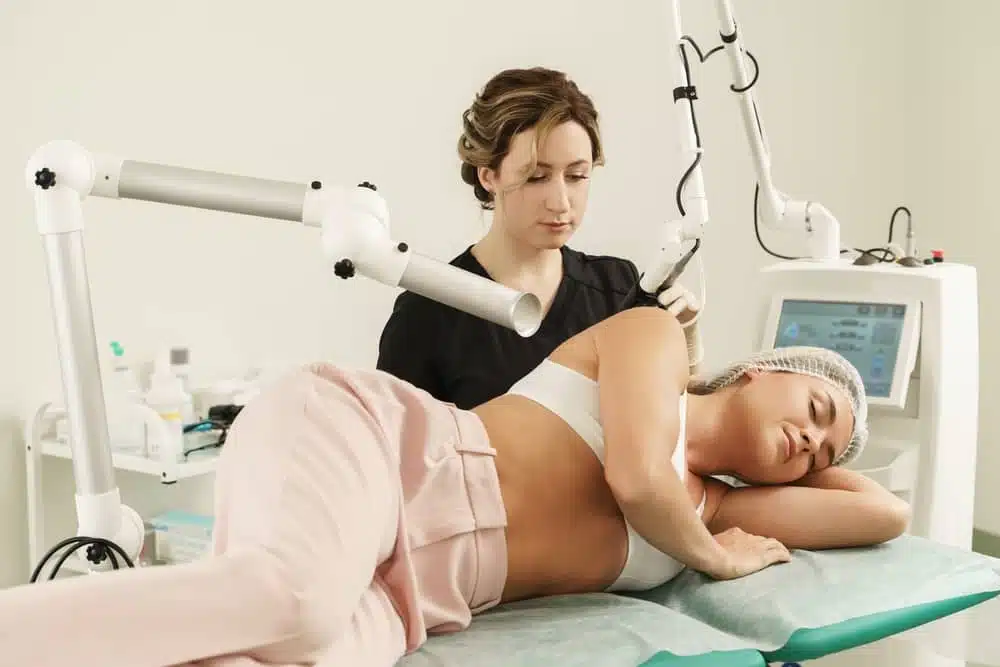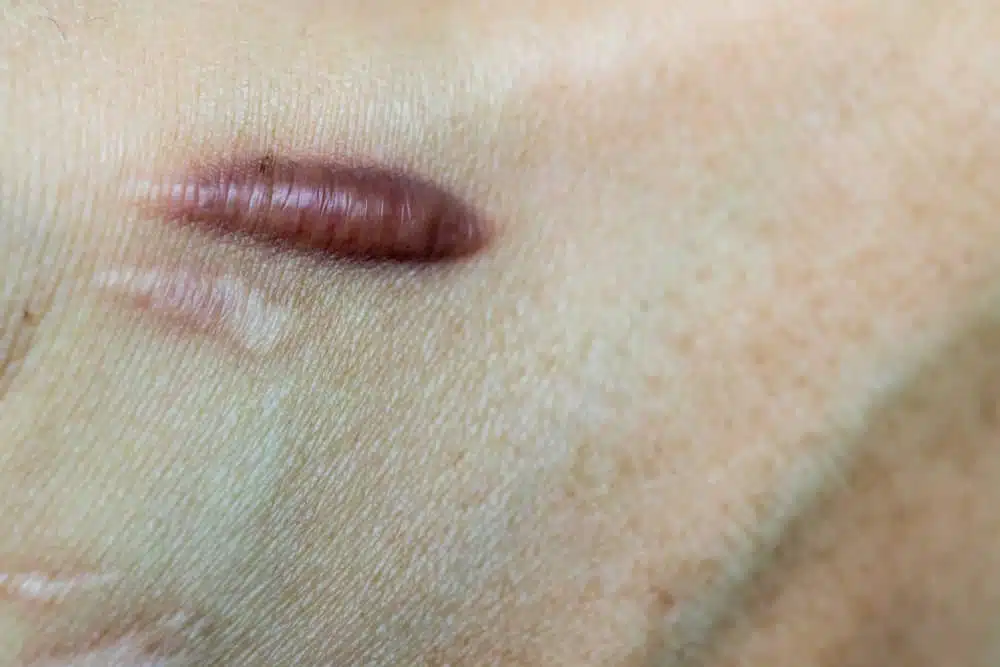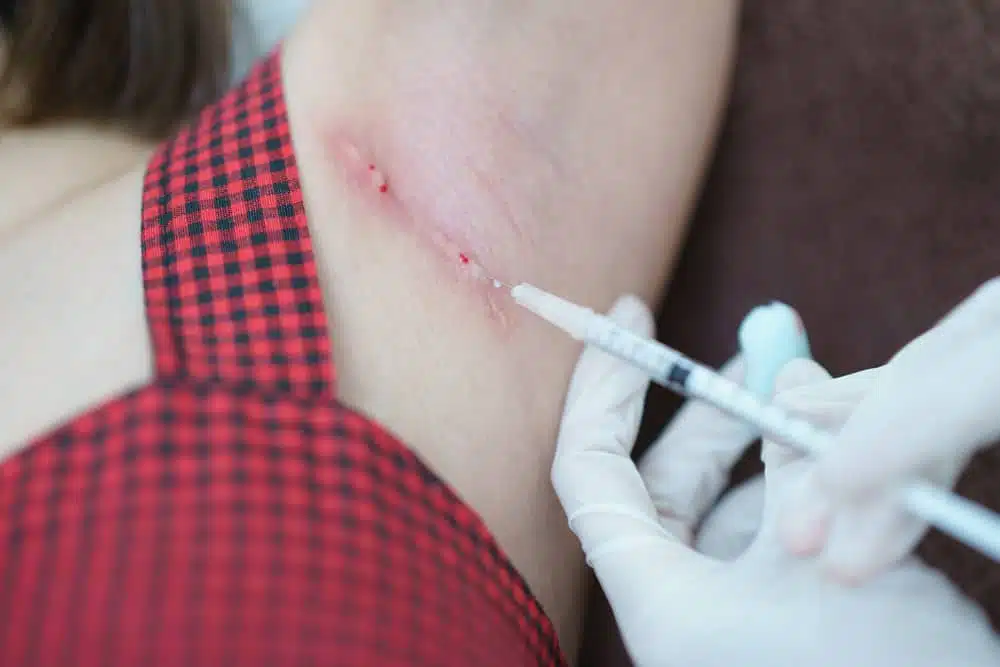Radiation therapy is a common treatment for keloids and hypertrophic scars. Superficial radiation therapy, provided by Sensus Healthcare, is a type of radiation therapy that is used to treat keloid and hypertrophic scars. While this procedure can be effective in reducing the size of these scars, there are some potential keloid radiation therapy risks that should be considered before undergoing this type of treatment.
Surgical excision is the most common treatment for keloid scars, but radiation therapy can also be used. Radiation treatment for keloids involves delivering a low dose of radiation to the affected area to stop the growth of the scar tissue. The radiation works by disrupting the cell cycle and preventing new cells from forming.

The dose of radiation used is carefully calculated to ensure that it does not cause any damage to healthy tissue, while still being effective at treating the keloid scar.
Superficial radiation therapy for keloids is generally considered to be a safe and effective treatment. It can also be used to treat other types of skin conditions, such as basal cell carcinoma, squamous cell carcinoma, and non-melanoma skin cancer. While this type of radiation therapy is not typically used to treat cancer cells, it can be an effective way to reduce the size of keloid scars and improve their appearance.
However, there are some risks associated with this treatment of keloids that should be taken into consideration before undergoing keloid radiation therapy.
Candidates for Superficial Radio Therapy for Keloids
Postoperative traditional radiation therapy is an alternative to surgery to treat keloid scars caused by piercings. It can be used as a follow-up treatment after surgical excision or as a primary treatment for those who are not suitable candidates for surgery.
Asian, African, and Caucasian patients all have different recurrence rates when it comes to the treatment of keloid scars. Asian patients tend to have higher recurrence rates than African and Caucasian patients after undergoing superficial radiation therapy for keloids. This is because Asian skin tends to be more sensitive to radiation than other ethnicities.
African and Caucasian patients typically have lower recurrence rates with this type of treatment, but it is still important for them to be aware of the potential risks associated with superficial radiation therapy for keloids.
1. Burns
Most commonly, patients undergoing radiation therapy for keloids may experience burns. These can range from mild to severe and are caused by intense radiation targeting the area of scar tissue. You must discuss with your doctor how much skin coverage you would need to protect other areas with healthy skin when exposing the targeted keloid(s) during treatment.
In addition, your doctor should be able to provide you with information about the possible side effects and any other considerations that need to be taken into account such as keloid creams and painkillers if it’s necessary. It is also important to understand that while this type of treatment can be effective in reducing the size of keloid scars, it may not eliminate them.
2. Inflammation
Superficial Radiation Treatment of keloids may also cause swelling and inflammation of the scar tissues due to the bombardment of cells by high-energy beams, resulting in pain and discomfort, especially in more advanced stages of scarring.
Primary keloids are those that form without any prior injury or trauma to the skin. While superficial radiation therapy is generally considered a safe and effective treatment for primary keloids, there are still some risks associated with this type of treatment. These include burns, inflammation, and an increased risk of recurrence in certain ethnicities.
3. Hypopigmentation
Some patients treated with radiation therapy for their keloids have reported a decrease in color pigmentation after treatment due to damage to melanocytes (the pigment-producing cells found in the skin). This can result in patches of discoloration which may last several months after treatment or require further medical intervention through depigmenting medications or camouflage makeup products to reduce its appearance.
4. Scarring or Skin Damage
A possible side effect of radiation therapy is new scarring or skin damage to the affected area. This can be caused by too much exposure to UV light, which could cause further damage to already sensitive areas that could have been wounded previously. With proper care and monitoring, superficial radiation therapy can be a safe and effective way to treat keloids.
5. Infections
Keloids can be vulnerable to infection if not immediately treated with antibiotics as radiation therapy reduces blood flow and immune system activity in the area, allowing bacteria to colonize poorly cared-for wounds or cuts before proper healing takes place. With attention and the right care, you can achieve healthier skin and reduce the risk of adverse effects associated with superficial radiation therapy for keloids.

6. Secondary Keloids
One of the risk factors associated with superficial radiation therapy for keloids is recurrent keloids nearby or even at another location on your body where it was not originally present. It is important to discuss the potential risks with your doctor before undergoing treatment, as well as any management strategies that can be used to reduce the risk of recurrence.
It is important to note that keloid recurrence rates vary among different ethnicities. African and Caucasian patients typically have lower recurrence rates with this type of treatment, but it is still important for them to be aware of the potential risks.
Additionally, it is important to understand that even after successful treatment, there is still a chance of recurrence and that regular follow-up visits with your doctor are necessary to monitor for any signs of recurrence. With proper management and monitoring, the risk of recurrent keloids can be minimized and patients can enjoy long-term relief from their keloid scars.
7. Possible Damage To Nearby Organs
When it comes to superficial radiotherapy for keloids, there is a risk of radiation exposure to nearby organs such as the mammary glands, depending on the length and amount of treatments needed for treatment. This is especially true if the radiation dose used is too high or if the treatment area is too close to other organs.
Let your doctor know what type of medical condition you have before undergoing this procedure so proper precautions can be taken by your physician.

How to Minimize the Risks of Superficial Radio Therapy for Keloids?
Radiotherapy for keloids is a common treatment option, and as we saw it can carry some risks. To minimize these risks, it is important to use an effective dose of radiation and to take preventive measures such as avoiding sun exposure and using sunscreen when outdoors.
In addition to superficial radiation therapy keloid, plastic surgery and topical treatments are also available for the management of keloids. Plastic surgery is often used to remove or reduce the size of keloids, while topical treatments such as corticosteroid creams can be used to reduce inflammation and itching associated with keloids. These treatments may be combined with radiation therapy to achieve the best results. However, it is important to discuss all treatment options with your doctor before making a decision on which one is right for you.
Finally, it is important to follow up with your doctor regularly after any radiotherapy treatment to monitor the progress of the keloid and ensure that it does not worsen or spread.
Schedule a Superficial Radiation Therapy with us
If you are looking for a safe and effective way to manage your keloid recurrence and reduce the risk of adverse effects with the right radiation doses, schedule a superficial radiation therapy appointment with us today! Our experienced surgeons Dr. Mendez and Dr. Salloum will work with you to create an individualized treatment plan according to superficial radiation therapy keloid cost that takes into account your unique needs and goals. We will also guide how to best prevent future keloids from forming. Don’t wait any longer – contact us now to get started on your journey towards healthier skin!